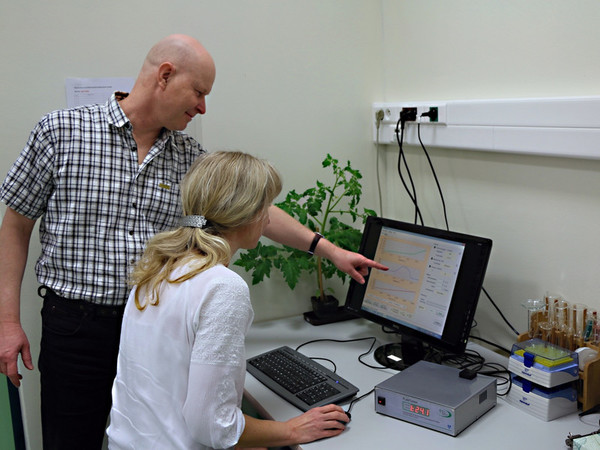Scientists from the Centre of the Region Haná for Biotechnological and Agricultural Research (CRH) have developed a device measuring the resilience of plants against high temperatures. The device is called PlanTherm and it determines the general thermostability of the cell as well as the thermostability of the photosynthetic apparatus. Those characteristics had to be, until now, determined separately, so the new device makes the measurement faster, simpler, and more comprehensive. Plant thermostability is studied in basic research, but it also may help cultivators to select varieties resistant to heat.
“It is a universal device to measure the thermostability of any cells, although it was primarily developed to measure plant cells. It is basically a heating system with linearly increasing temperatures. The whole measurement takes about 25 minutes,” said Head of the Department of Biophysics, Petr Ilík. CRH scientists have developed the device in collaboration with a Czech company Photon Systems Instruments and are offering it for commercial use.
The information on plant thermostability gains significance, among other things, in the context of current climate changes and the more frequent occurrence of extreme temperatures. “Plants respond according to their resilience. Our method should help in selection of agricultural crop varieties that would maintain their yield even in unstable climatic conditions. It serves for testing of how the plants react to a short-term high-temperature stress while they acclimate,” said Martina Špundová, a member of the research team.
The measurement requires only a small sample of the plant, ideally a leaf. The sample is inserted in a small apparatus containing a bath with deionised water. “The plant segment is heated from room temperature to approximately 75 degrees Celsius. The increasing temperature alters the chlorophyll fluorescence which indicates the temperature resilience of the photosynthetic processes. Simultaneously, we measure the conductivity of the medium and thus determine the resilience of the cell membrane. All this is done without the previous test measurements that used to be necessary,” explained prof Ilík.
The scientific community can learn more about the new method developed by Olomouc scientists in an article published in the journal New Phytologist.
The Centre of the Region Haná for Biotechnological and Agricultural Research joins scientific teams from Palacký University and the Olomouc branches of the Institute of Experimental Botany at the Czech Academy of Sciences and the Crop Research Institute.
